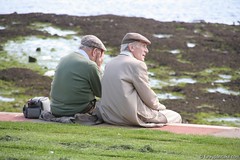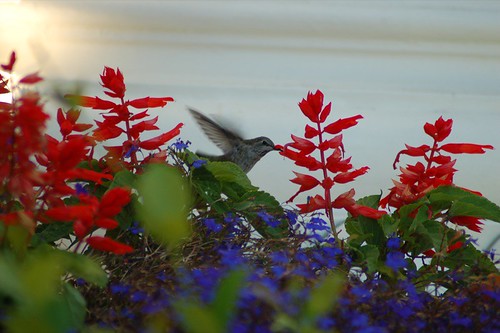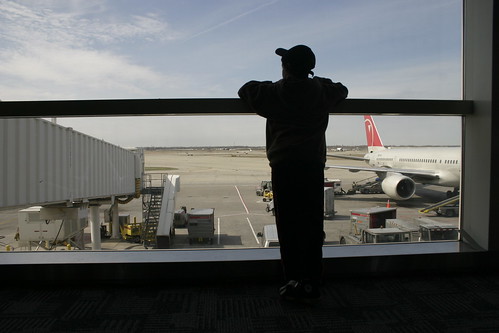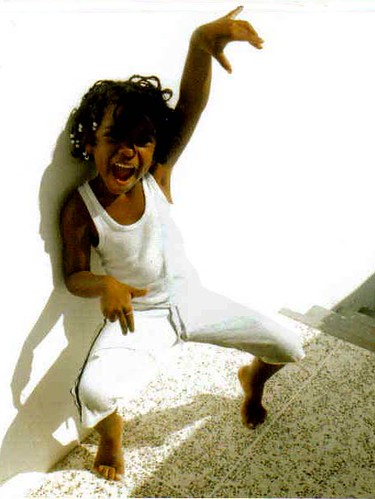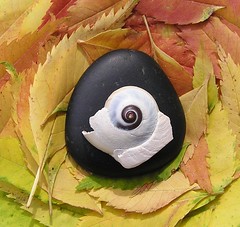 "Smile, breathe and go slowly." - Thich Nhat Hanh, Zen Buddhist monk
"Smile, breathe and go slowly." - Thich Nhat Hanh, Zen Buddhist monk The idea of being mindful - being present, being more conscious of life as it happens - may seem contradictory to those who are used to sacrificing living for pursuing their goals ... but cultivating mindfulness will help you achieve your goals and enjoy life more.
Focusing on one task at a time, putting yourself fully into that task, is much more effective than multi-tasking. Focusing on one real goal at a time is also more effective. Focusing on what you're doing right now is highly effective. You're more productive when you're mindful.
But more importantly, being present is undoubtedly the only way to enjoy life to the fullest. By being mindful, you enjoy your food more, you enjoy friends and family more, you enjoy anything you're doing more. Anything. Even things you might think are drudgery or boring, such as housework, can be amazing if you are truly present. Try it - wash dishes or sweep or cook, and remain fully present. It takes practice, but it's incredible.
Life in the Present: A 10-Step Approach
1. Do one thing at a time. Single-task, don't multi-task. When you're pouring water, just pour water. When you're eating, just eat. When you're bathing, just bathe. Don't try to knock off a few tasks while eating or bathing or driving. Zen proverb: "When walking, walk. When eating, eat."
2. Do it slowly and deliberately. You can do one task at a time, but also rush that task. Instead, take your time, and move slowly. Make your actions deliberate, not rushed and random. It takes practice, but it helps you focus on the task.
3. Do less. If you do less, you can do those things more slowly, more completely and with more concentration. If you fill your day with tasks, you will be rushing from one thing to the next without stopping to think about what you do. But you're busy and you can't possibly do less, right? You can. I've done it, and so have many busy people. It's a matter of figuring out what's important, and letting go of what's not.
4. Put space between things. Related to the "Do less" rule, but it's a way of managing your schedule so that you always have time to complete each task. Don't schedule things close together - instead, leave room between things on your schedule. That gives you a more relaxed schedule, and leaves space in case one task takes longer than you planned.
5. Spend at least 5 minutes each day doing nothing. Just sit in silence. Become aware of your thoughts. Focus on your breathing. Notice the world around you. Become comfortable with the silence and stillness. It'll do you a world of good - and just takes 5 minutes!
6. Stop worrying about the future - focus on the present. Become more aware of your thinking - are you constantly worrying about the future? Learn to recognize when you're doing this, and then practice bringing yourself back to the present. Just focus on what you're doing, right now. Enjoy the present moment.
7. When you're talking to someone, be present. How many of us have spent time with someone but have been thinking about what we need to do in the future? Or thinking about what we want to say next, instead of really listening to that person? Instead, focus on being present, on really listening, on really enjoying your time with that person.
8. Eat slowly and savor your food. Food can be crammed down our throats in a rush, but where's the joy in that? Savor each bite, slowly, and really get the most out of your food. Interestingly, you'll eat less this way, and digest your food better as well.
9. Live slowly and savor your life. Just as you would savor your food by eating it more slowly, do everything this way - slow down and savor each and every moment. As I type this, for example, I have my 3-year-old daughter, Noelle, on my lap. She's just sitting here quietly, as the rain pours down in a hush outside. What a lovely moment. In fact, I'm going to take a few minutes off just to be with her now. Be right back. :)
10. Make cleaning and cooking become meditation. Cooking and cleaning are often seen as drudgery, but actually they are both great ways to practice mindfulness, and can be great rituals performed each day. If cooking and cleaning seem like boring chores to you, try doing them as a form of meditation. Put your entire mind into those tasks, concentrate, and do them slowly and completely. It could change your entire day (as well as leave you with a cleaner house).
Keep practicing. When you get frustrated, just take a deep breath. When you ask yourself, "What should I do now, Self?" The answer is, "keep practicing."
"When you drive around the city and come to a red light or a stop sign, you can just sit back and make use of these twenty or thirty seconds to relax - to breathe in, breathe out, and enjoy arriving in the present moment. There are many things like that we can do." - Thich Nhat Hanh
Original article
Photo by patries71











